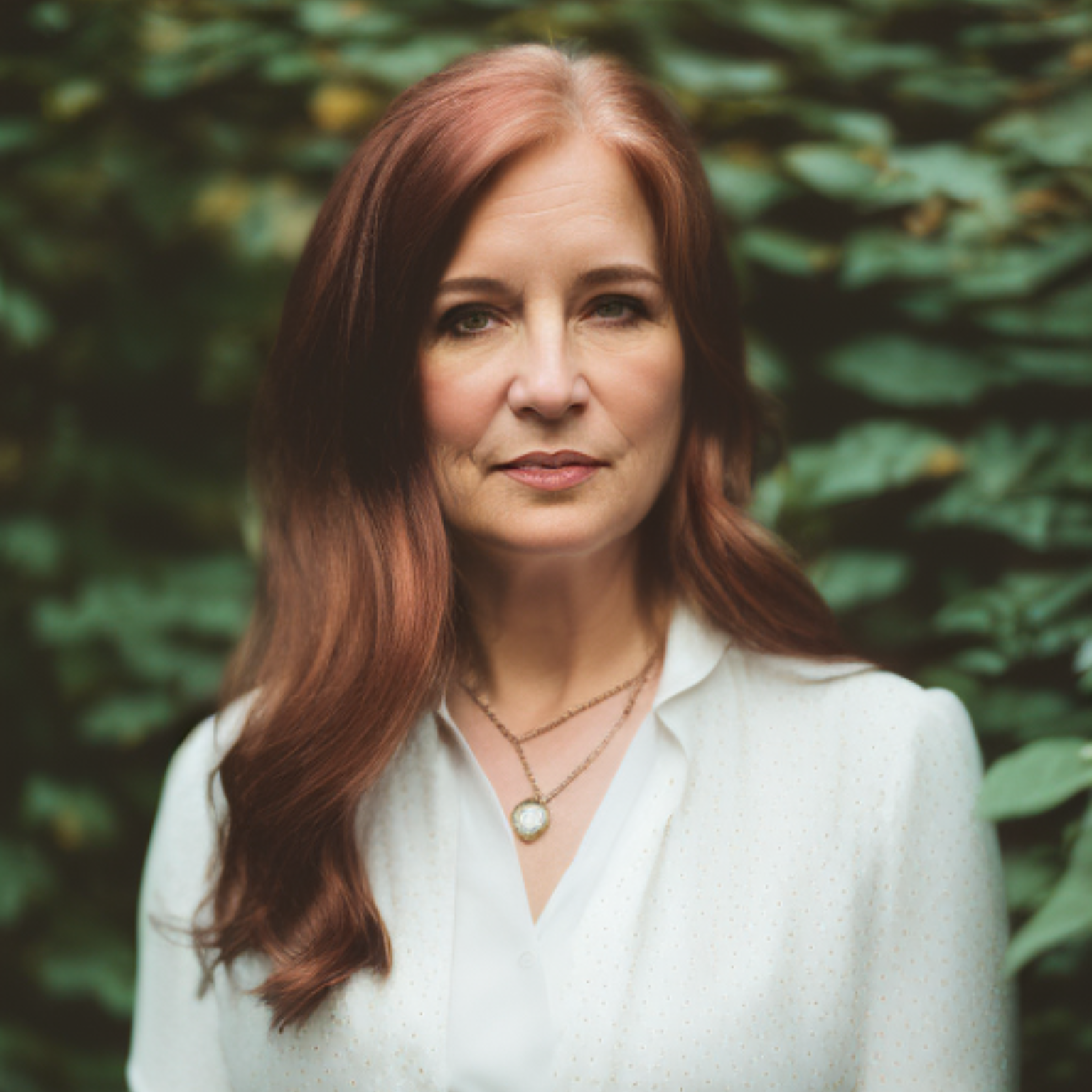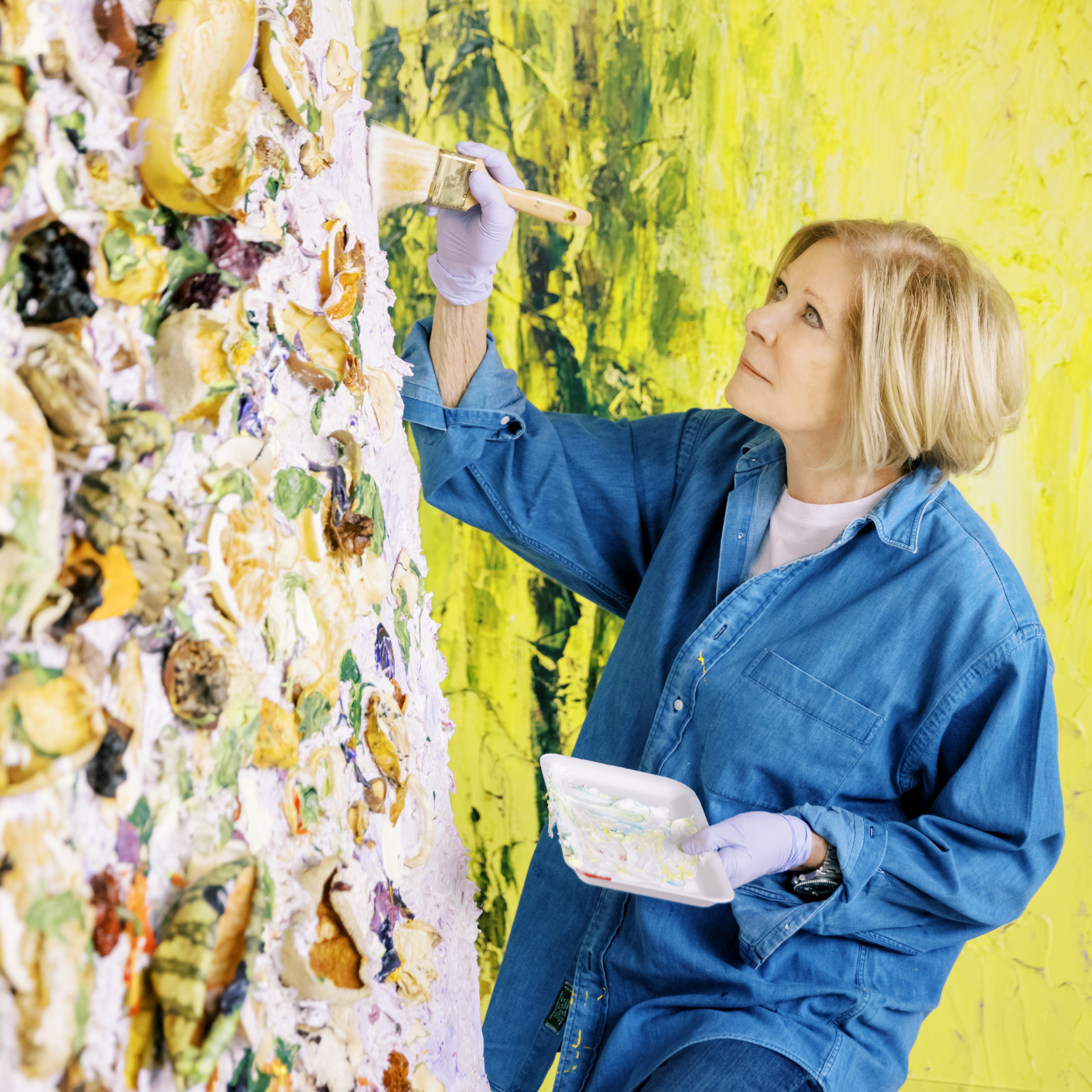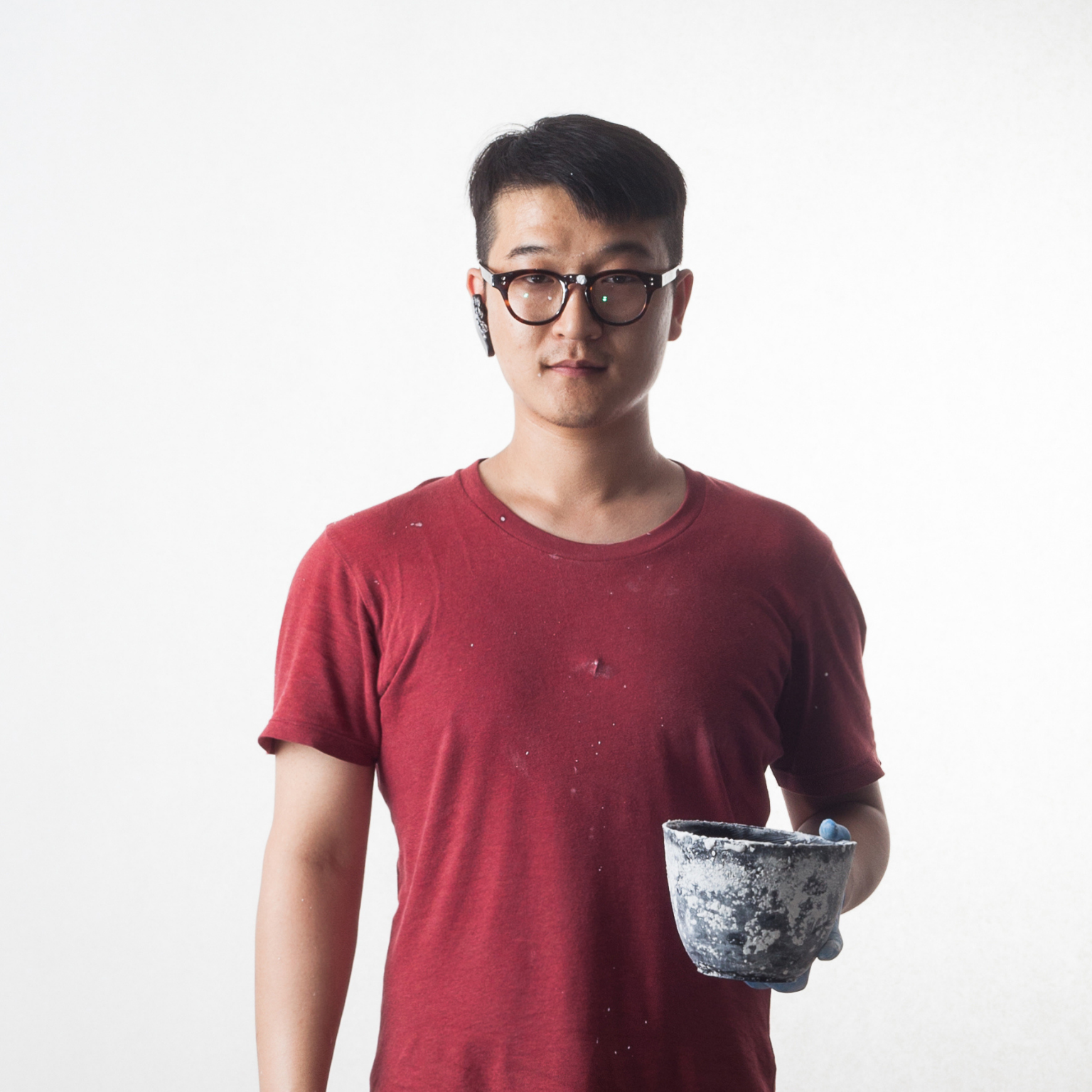Anne Marie Price, mosaic artist from the United States. Photo © Courtesy of the artist
This interview aligns with the ‘Nature and Culture’ campaign initiated by the Culture For Causes Network in November 2022. Within this framework, an exhibition titled ‘Reconciliation with the Living’ was exhibited in Paris at UNESCO HQ, focusing on the theme of harmonizing humanity with itself and the natural world; the exhibition travelled to Florence and to Lisbon as well. Additionally, MuseumWeek 2023 featured numerous hashtags related to environmental topics. A video series titled ‘Nature and Art’, a collaborative effort between UNESCO and the Solomon R. Guggenheim Museum, was also showcased as part of this initiative.
“I began exploring the art form of mosaic in 2003 while a young mother to my two daughters. I had always been doing some kind of art or craft but mosaic art grabbed my attention like nothing else had or has since. There is just something to creating art in this manner that appeals to my love of patterns and collecting pieces to arrange into patterns”.
Thus, the artist Anne Marie Price (California) tells MuseumWeek Magazine about the beginning of her passion for art, but above all one of the oldest ever: mosaic.
And then she adds: “To be able to tell a story through texture and materials is just very satisfying to me and I’m very influenced by what environment I happen to be in at a moment”.
The origins of this refined technique, with such unique aesthetic research, date back to around the 4th century BC. to the ancient artistic forms widespread in Asia Minor, in Mesopotamia, and therefore in the Roman and Greek world; colored tiles mostly made of shells, glass and stones form plots of stories that tell scenes of ordinary, daily life, such as those of a hunt, of a landscape, sometimes defined with gold and precious stones.
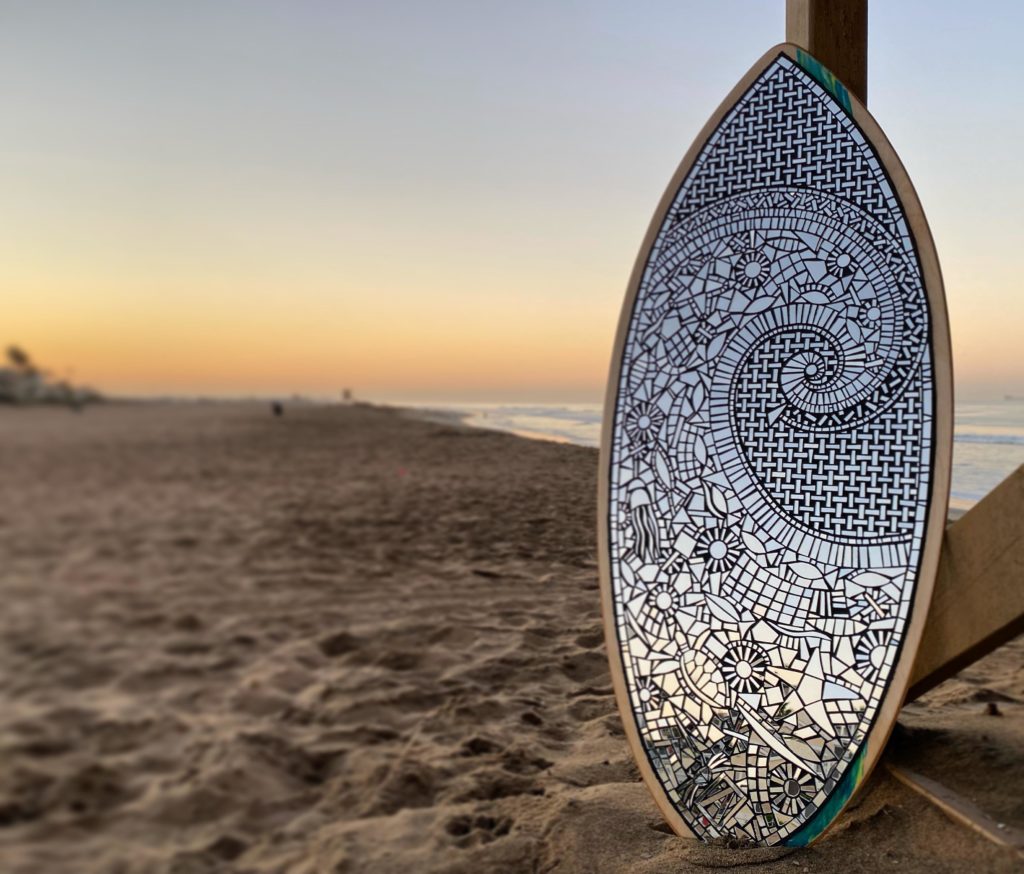
Price, on the other hand, immerses herself in the places where she lives where she draws energy and strength, especially through the sea to create her great works made not of colored ceramic as is customary today but uses the debris of the Ocean such as shells, glass and unfortunately also plastic to define especially women’s faces and landscapes.
The artist therefore uses her sustainable artistic production as a denunciation of the environmental crisis.
Therefore, unfortunately also plastic and so each work becomes a sort of complaint to draw attention to the environmental emergency. Was this point a coincidence or was it a choice for sustainability?
It was very intentional when I began to create temporary mosaics on the beach using the plastics I collected there. I had been using broken-up shells you naturally find there and noticed after a while how much trash was also on the beaches I would visit.
I also noticed how easily it seemed to be for people to simply walk past it and ignore that it was there. I had a hard time ignoring it and on a regular picked it up to dispose of it while finding shells for my shell mosaic art.
Because I gathered so much attention with my shell mosaics..one day I thought well maybe I can make a mosaic using plastics and trash found on the beach..maybe then people will begin to notice if I make art with it and they won’t just walk past it anymore. It worked.
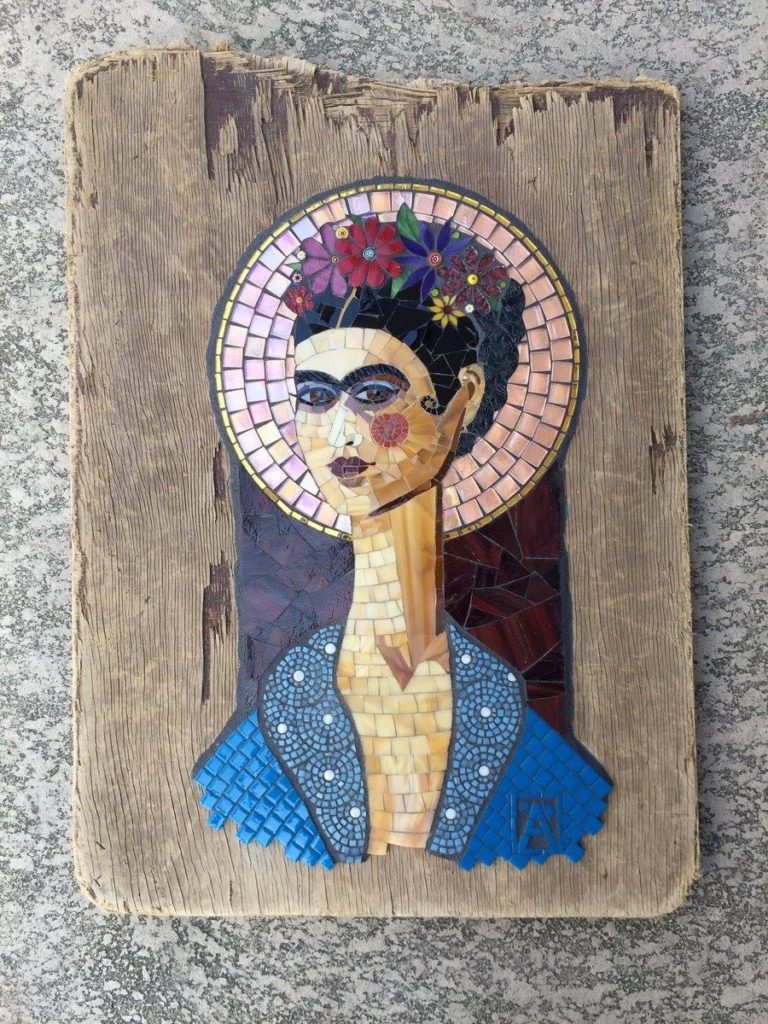
I began to receive feedback that while it was creative what I was making with it… also sad how much there was available to use in my creations. Finally, people were seeing it for what it was through art.
What materials do you prefer? Why?
I prefer working with stained glass first and foremost but I could use any materials and love the challenge of working and creating with whatever I find. Since I was a little girl, I was mesmerized by big stained glass windows in an old church and it’s really where the stained glass love began.
I just love everything about it… color, textures, and smoothness of the pieces. It’s just been a from day one attraction for me and just makes sense I would later use it in my art as an artist.
Could you explain to us how you create your work? From the choice of material to the finished product?
How I create my work varies from where I’m at at the moment or what materials I have available to use. Sometimes a particular piece of glass inspires me to create something with it and other times it’s an emotion or event in my life or a place.
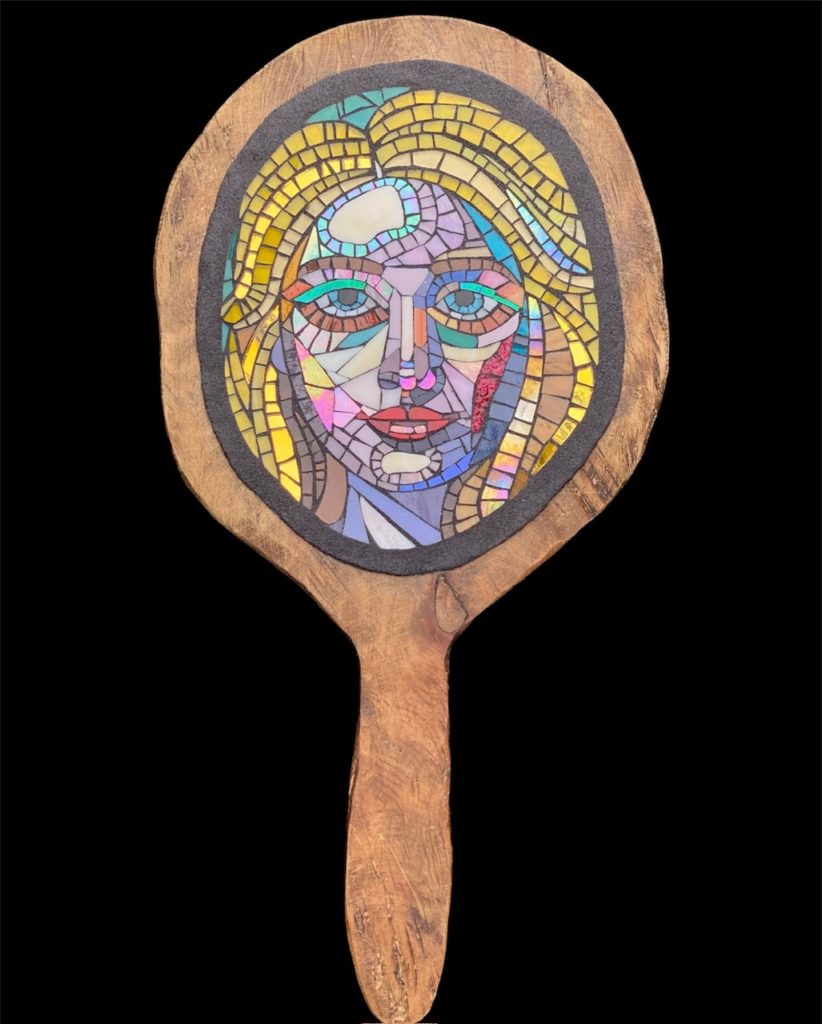
I begin where I begin with that and then draw out a design or sometimes free-hand a mosaic which is how my abstract mosaics come to be. I am pretty fluid in how I create so it just depends on what exactly I am working on and what is required of me to make that idea take form.
How much does the environment influence the choice of the subject of a new work?
My environment greatly affects my work. I always joke that in a lot of ways my work is a bit of a visual journal of where I’m at physically but also emotionally. I am constantly inspired by what I see around me and very open to taking photographs that inspire a mosaic eventually in some way.
What are your next projects?
My next bigger project is a commissioned portrait of Mary and my interpretation of this woman, mother, and iconic figure in historical and religious connotations. I am not religious myself but I have always been fascinated with religious symbolism and the stories connected to different iconic characters in religions.
I look forward to making this a special piece that inspires and has some of my ideas of who I felt she was and what she symbolizes to those who are devoted to her in a religious sense.
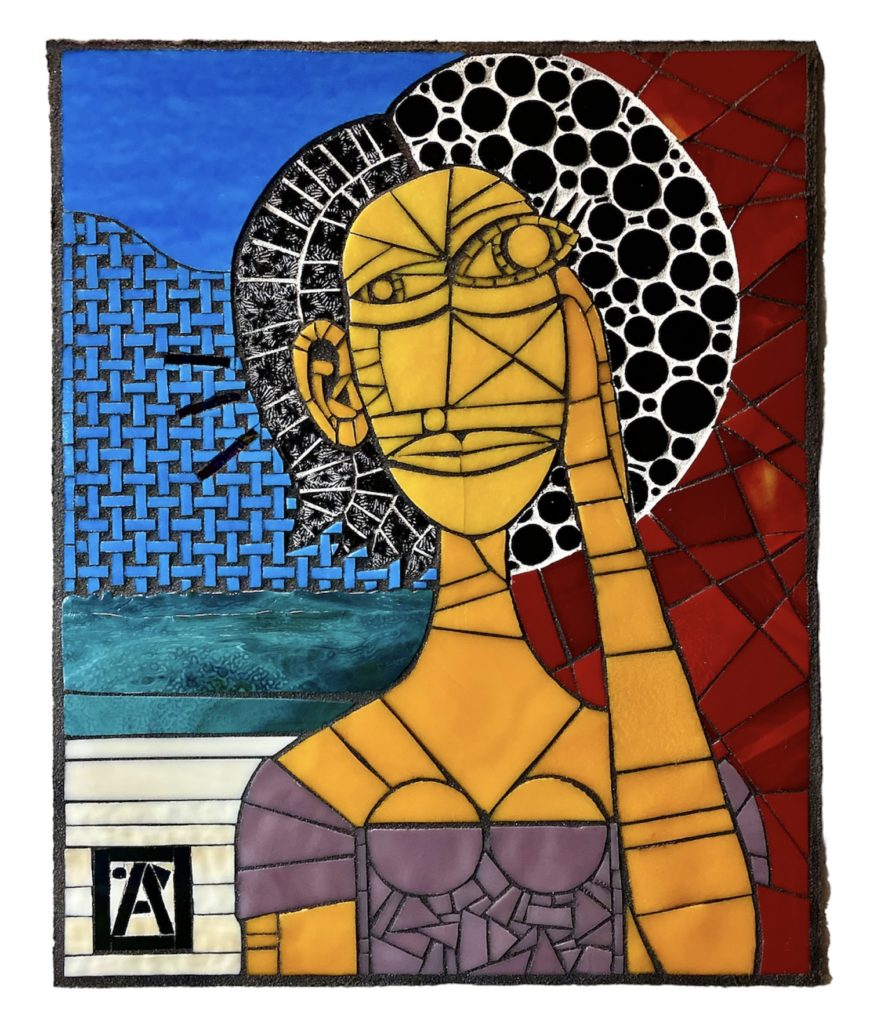
I am also preparing to create another piece using a unique substrate..a vintage wood ironing board. I love finding unique substrates to put my mosaic on and this has been in the works idea-wise for the past year. You will find a lot of my work uses a substrate that is discarded because I love the idea of giving it a new life as art.
Interview by Fabio Pariante, Twitter / Instagram / Website
